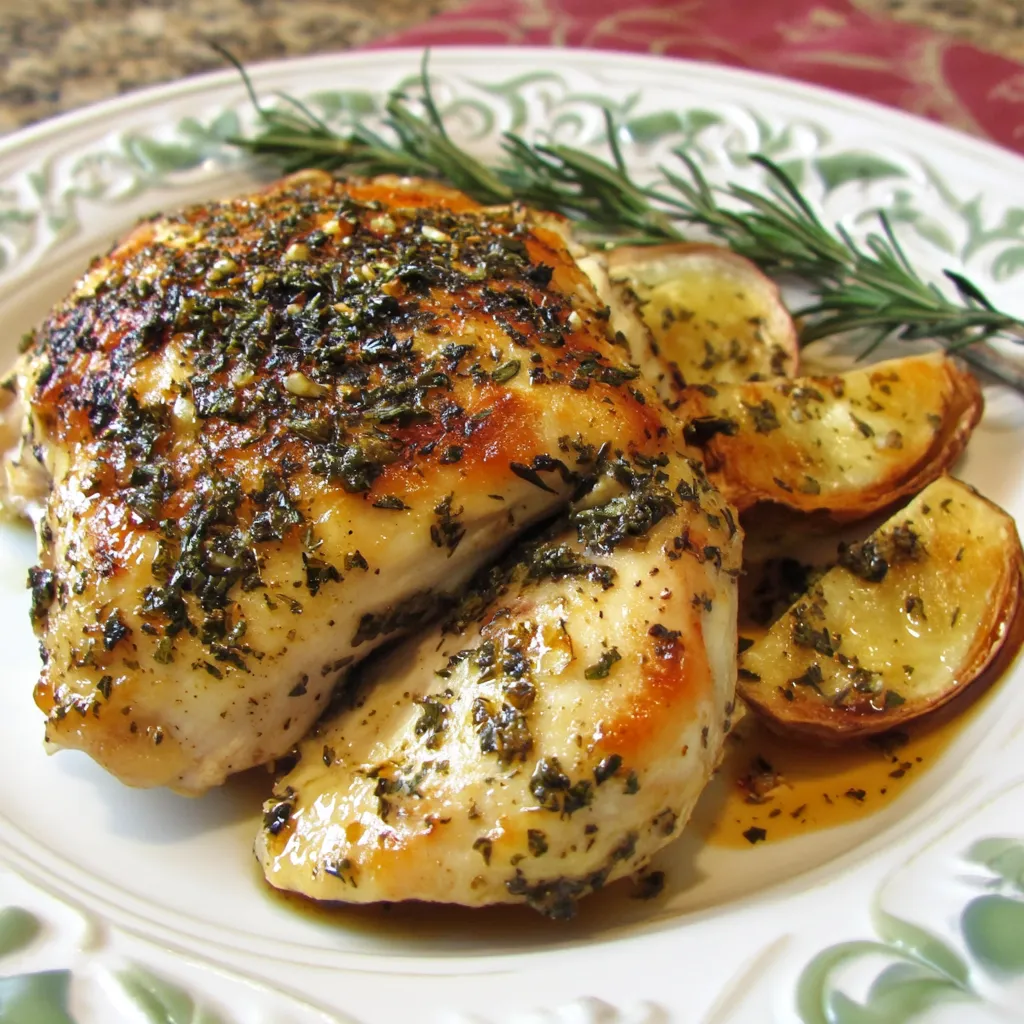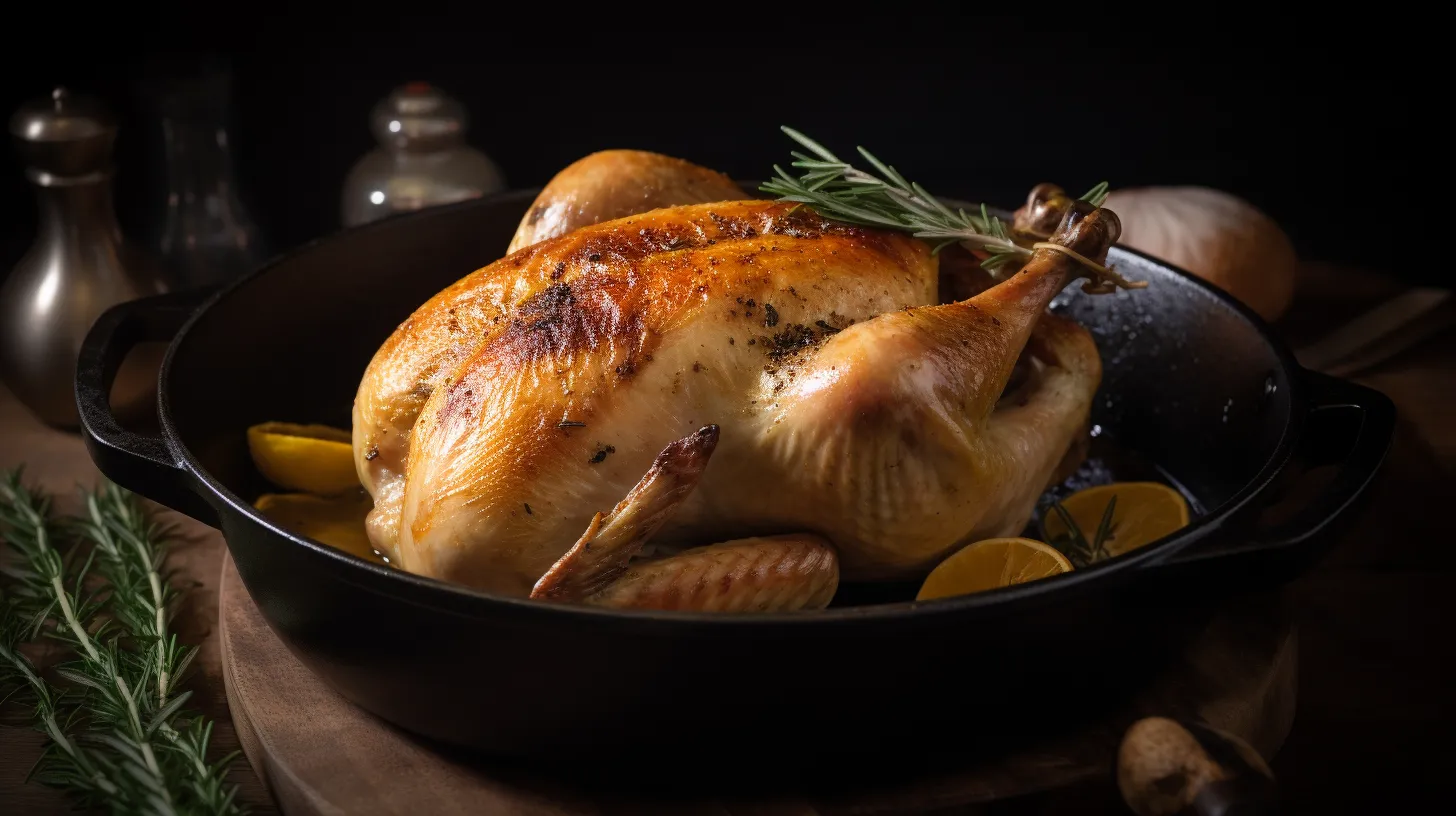How long should you slow roast chicken? If you’re aiming for tender, juicy, and flavorful meat with a perfectly crispy skin, slow roasting is the ultimate cooking method. This time-honored technique transforms a simple chicken into an irresistible dish, allowing the meat to cook low and slow for maximum tenderness and deep, rich flavor. By roasting at a lower temperature over an extended period, the chicken retains its natural juices while developing a deliciously crisp exterior.
This comprehensive guide will provide a clear answer to how long you should slow roast chicken, breaking down recommended cooking temperatures, expert tips, and a step-by-step process to ensure perfect results every time. Whether you prefer a fall-apart texture or a beautifully golden finish, mastering slow roasting is key to achieving the best balance of moisture and crispiness.
But what factors determine the ideal roasting time? The answer depends on several elements, including the size of the chicken, the roasting temperature, and the seasoning techniques used. Knowing how to adjust for these variables can help you avoid common pitfalls like dry meat or uneven cooking.
If you’re preparing a hearty family dinner or looking to impress guests with a restaurant-quality meal, slow roasting is a foolproof method that guarantees success. In this guide, we’ll cover everything you need to know—from optimal cooking times and flavor-enhancing seasonings to expert techniques that will leave you with a perfectly roasted chicken every single time.

Table des matières
Why Slow Roasting is the Best Method for Cooking Chicken
Unlike high-heat roasting, where the exterior can cook too quickly and leave the inside dry, slow roasting allows the meat to cook evenly from edge to center. The controlled temperature lets the natural fats in the chicken render slowly, resulting in exceptionally juicy and flavorful meat.
Slow roasting also helps break down collagen, a connective tissue found in chicken, which turns into gelatin when cooked slowly. This gives the chicken a silky, moist texture, making each bite tender. Cooking at a high temperature, on the other hand, can cause the collagen to shrink too quickly, making the meat tough and chewy.
According to the USDA Safe Cooking Temperatures, chicken must reach an internal temperature of 165°F (74°C) to be safe to eat. However, when cooking at a lower temperature for a longer period, the internal temperature can be reached more gradually, preventing the moisture from evaporating too quickly.
Furthermore, the science behind slow roasting reveals that roasting at 275°F to 325°F allows for better Maillard reaction development, which enhances the flavor and color of the skin. Unlike frying or grilling, slow roasting ensures that the chicken remains juicy inside while achieving a crispy, golden-brown crust on the outside.
If you’re looking for ways to incorporate slow-roasted chicken into weekly meal plans, check out this guide on slow-roasted chicken for creative meal prep ideas.
How Long Should You Slow Roast Chicken?
Recommended Slow Roasting Temperatures and Cooking Times
The time required for slow roasting chicken depends on several factors, including the weight of the bird, the roasting temperature, and whether the chicken is stuffed or unstuffed. Below are some general guidelines for slow roasting at different temperatures:
- 250°F (121°C): At this temperature, slow roasting takes approximately 4 to 5 hours for a 4-5 lb whole chicken. This method is ideal for extra tenderness, as the meat slowly breaks down over time.
- 275°F (135°C): Cooking at this temperature requires around 3.5 to 4 hours for a 4-5 lb whole chicken. This setting maintains the perfect balance between slow cooking and efficiency.
- 300°F (150°C): A slightly faster method, taking about 2.5 to 3.5 hours to fully cook a 4-5 lb whole chicken. This temperature retains most of the moisture while giving the skin a nice crisp.
- 325°F (163°C): The quickest “slow roast” method, cooking a 4-5 lb whole chicken in about 2 to 2.5 hours. While still tender, the slightly higher temperature requires more careful monitoring to prevent drying out the meat.
💡 Pro Tip: If you want extra crispy skin, increase the oven temperature to 400°F during the last 15-20 minutes of roasting. This will allow the skin to crisp up beautifully without overcooking the inside.
For those interested in alternative cooking methods that still retain moisture, check out this Instant Pot whole chicken recipe for a quicker, pressure-cooked version of slow-roasted chicken.

Step-by-Step Guide to Slow Roasting Chicken
1. Preparing the Chicken
Preparation is key when it comes to slow roasting. Ensuring the chicken is properly prepped will make a significant difference in the final flavor and texture. Follow these essential steps:
- Choose the right size: A 4-5 lb whole chicken is ideal for slow roasting, as it cooks evenly while staying juicy.
- Pat the chicken dry: Removing excess moisture from the skin with a paper towel allows it to crisp up nicely during roasting.
- Season generously: Use salt, black pepper, fresh garlic, and herbs like rosemary and thyme to infuse the meat with flavor.
- Let it rest before roasting: Allowing the chicken to sit at room temperature for 30 minutes before roasting ensures even cooking.
2. Preheating the Oven
Before placing the chicken inside, it’s crucial to set the correct oven temperature. Preheat your oven based on your preferred slow roasting time (275°F to 325°F). Using a roasting rack inside the pan helps promote air circulation, allowing the heat to distribute evenly around the chicken.
3. Roasting Process
Once prepped and seasoned, follow these steps for the best results:
- Place the chicken breast-side up in a roasting pan.
- Cover loosely with foil during the first hour to prevent excessive browning.
- Baste every 30 minutes with the pan juices to keep the meat moist.
- Use a meat thermometer to check doneness; insert it into the thickest part of the chicken, ensuring it reaches 165°F (74°C) before removing from the oven.
4. Resting Before Serving
After removing the chicken from the oven, it’s essential to let it rest for 15-20 minutes before carving. This waiting period allows the juices to redistribute throughout the meat, making every bite even more succulent and flavorful.
Pair your slow-roasted chicken with healthy side dishes by exploring this gluten-free meals guide for nutritious and delicious meal options.
Common Mistakes & How to Fix Them
Even experienced cooks can make errors when slow roasting. Here are a few common problems and solutions:
- Chicken is dry: If the meat turns out dry, lower the oven temperature slightly and baste more frequently.
- Skin is too soft: To crisp up the skin, increase the temperature to 400°F for the last 15 minutes.
- Uneven cooking: Placing the chicken on a roasting rack allows heat to circulate evenly, preventing undercooked sections.

FAQs About Slow Roasting Chicken
How Long Should I Slow Roast a 5 lb Chicken?
The cooking time for a 5 lb chicken depends on the temperature you choose for slow roasting. The lower the temperature, the longer it will take to cook, but the more tender and juicy the meat will be.
- At 275°F (135°C): Cooking at this temperature typically takes 3.5 to 4 hours. This moderate slow-roasting method allows the chicken’s fat to render slowly, keeping the meat moist and flavorful. The skin will turn golden brown while the inside remains incredibly tender.
- At 325°F (163°C): If you’re short on time but still want a juicy roasted chicken, cooking at 325°F will take about 2.5 hours. This is the fastest slow-roasting method, but you need to be careful to avoid drying out the meat. Basting every 30-45 minutes can help maintain moisture.
💡 Pro Tip: If you want extra crispy skin, increase the oven temperature to 400°F during the last 15-20 minutes of roasting. This will help the skin develop a deep golden-brown color while locking in juices.
Can I Slow Roast at 250°F?
Yes, slow roasting at 250°F (121°C) is completely possible and can actually yield some of the most tender and flavorful chicken. Cooking a whole 5 lb chicken at 250°F will take around 4 to 5 hours, but the results are well worth the wait.
At this lower temperature, the connective tissues in the chicken break down slowly, resulting in meat that is fall-off-the-bone tender. The fat gradually renders, keeping the chicken moist without the risk of drying out.
However, since 250°F is a low and slow method, it’s essential to use a meat thermometer to ensure the chicken reaches an internal temperature of 165°F (74°C) in the thickest part of the breast or thigh. Always check the temperature before serving to guarantee both safety and the best texture.
Is It Safe to Slow Roast Overnight?
Many people wonder whether slow roasting a chicken overnight is a safe cooking method. The answer is yes, as long as it is done correctly. Cooking at 250°F overnight can be a convenient way to prepare a juicy, flavorful chicken without constant monitoring.
To ensure safety, follow these guidelines:
- Use a reliable oven thermometer to confirm the temperature stays at 250°F consistently.
- Check the internal temperature with a meat thermometer before eating. The chicken must reach 165°F in the thickest part of the breast and thigh.
- Consider using a roasting pan with a rack to allow heat to circulate evenly around the chicken, preventing undercooking.
- Baste occasionally if possible to keep the meat moist and enhance flavor.
Slow roasting overnight is a fantastic method for people who want to prepare meals in advance. Once cooked, simply let the chicken rest, carve it, and store it for easy meal prep throughout the week.
Would you like to explore more ways to cook chicken? Check out this ultimate guide to slow-roasted chicken for additional tips and techniques! 🚀
Final Thoughts: Why Slow Roasting is Worth It
Slow roasting chicken takes patience, but the rewards are undeniable. The meat remains incredibly tender, while the flavors develop to perfection. By choosing the right temperature and cooking time, you can enjoy restaurant-quality roasted chicken at home.
For more chicken cooking tips, check out this ultimate guide to slow-roasted chicken.
Now, it’s time to slow roast your way to perfection! 🥘🔥

